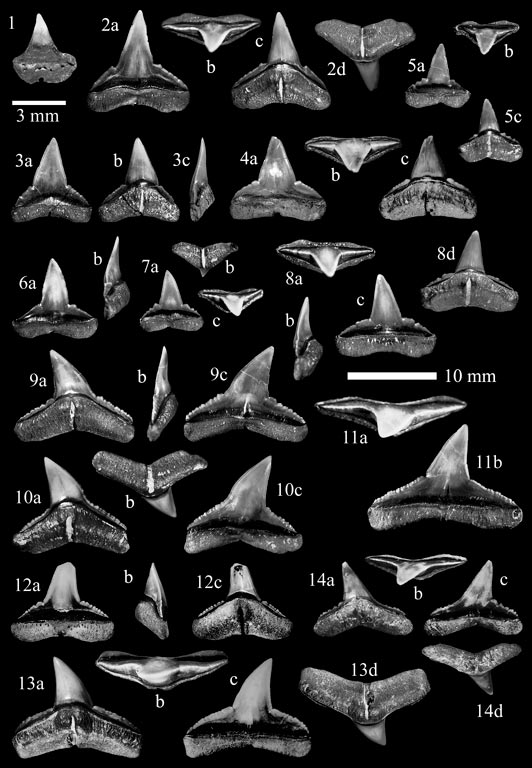
|

|
PALAEONTOS 26Price: members: 35 €, non-members: 40 € Thomas Reinecke, Markus Balsberger, Bernhard Beaury & Jürgen Pollerspöck, 2104, The elasmobranch fauna of the Thalberg Beds, early Egerian (Chattian, Oligocene), in the Subalpine Molasse Basin near Siegsdorf, Bavaria, Germany.(129 textpages, with 9 text figures and 38 plates)Abstract : A single bed of conglomeratic, fossil-rich marls intercalated in siliciclastic Lower Egerian deposits (informally denoted as Thalberg Beds, middle to late Chattian, Late Oligocene) yields a diverse elasmobranch fauna. The conglomeratic bed is exposed in the Thalberg Graben, a few km south of Traunstein, Upper Bavaria. It forms part of the Lower Marine Molasse, deposited in the North Alpine Foreland Basin representing the western prolongation of the Central Paratethys. 22 shark and 5 batoid taxa were recognized, of which 16 and 1, respectively, could be identified to species level. Shark species related to living taxa, actively swimming and foraging in the water column of the neritic zone (Notorynchus, Carcharias, Isurus, Galeorhinus, Alopias, Galeocerdo, Carcharhinus, Squalus and probably the fossil genera Otodus (Carcharocles), Araloselachus, Physogaleus and Carcharoides), dominate the fauna both by the number of observed taxa and collected teeth. Species of planktivorous sharks and batoids are few and their gill rakers (Keasius) and teeth (Mobula, Megachasma) are very rarely encountered. Sharks and batoids inhabiting present-day and past benthic or epibenthic habitats, typically of warm-temperate shelf seas, are strongly underrepresented (scyliorhinids, dasyatids, myliobatids) or completely absent (rajoids) in the Thalberg assemblage. On the other hand, various taxa of deep-water sharks (Hexanchus, Heptranchias, Echinorhinus, Centrophorus) are variably common. The composition of the Thalberg elasmobranch assemblage differs significantly from well documented assemblages of the Chattian warm-temperate/subtropical North Sea shelf, mainly with respect to shallow-marine, benthic and deep-water species. |
|
ORDER INFORMATION:please contact us at: palaeontos@gmail.com |
|